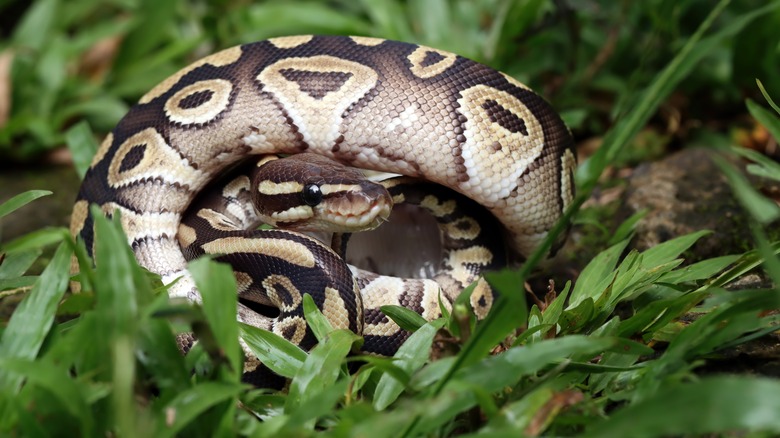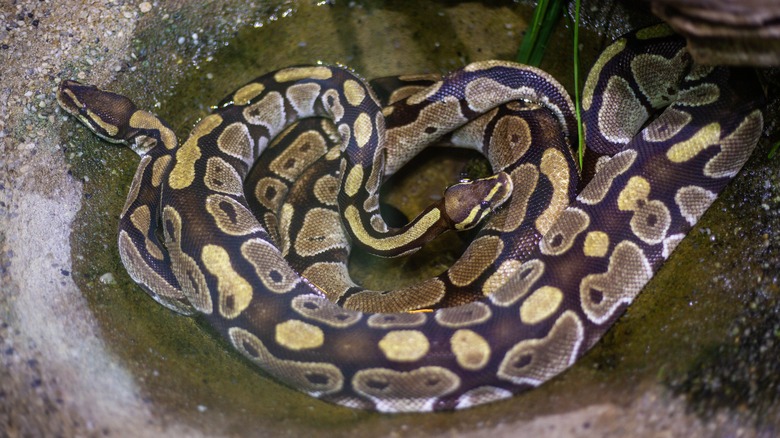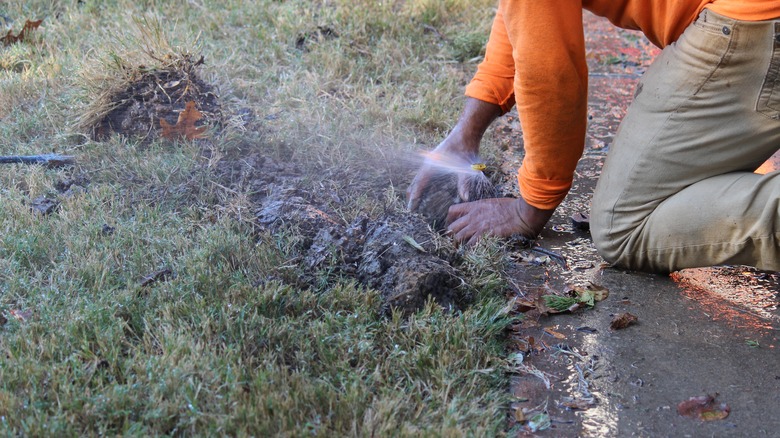The Lawn Care Mistake That's Bringing All Those Snakes To Your Yard
We may receive a commission on purchases made from links.
If you have noticed an uptick in snakes visiting your lawn recently, you might be anxiously looking for foolproof ways to keep snakes from slithering around in your yard. It can be worrisome to have these reptiles taking up residence in your grass, especially if you have pets or kids running free in your garden. But rather than looking up hacks, there might be an easier way to banish these pests. After all, hacks, by their very nature, can be a hit or miss — what works for some people doesn't work for others. But one way to guarantee you will see fewer snakes in your yard is to make it less attractive to them. A wet yard is one of the most hospitable places a snake can curl up in, so make sure you're not overwatering your lawn.
Overwatering is one of the top watering mistakes you can make with your lawn, so it's easy to do. Sometimes, we forget to turn off our sprinklers when there's rain in the forecast, and other times, we just become a little too zealous with a parched patch of grass. Whatever the reason, the resulting damp grass could take days, if not weeks, to dry out or could waterlog your lawn for even longer. Both scenarios create an ideal oasis for snakes, attracting them to your property — so you'll have to take some extra care with your lawn saturation if you'd rather these reptiles leave your yard for wetter, greener pastures.
Why snakes love overwatered lawns
It's a common misconception that snakes don't need much water to survive. But it's a necessary part of their day-to-day lives, and they need adequate amounts to regulate their body temperature and help with their metabolism. Because of this, they seek out areas where water is easily accessible — including yards that have any standing water or overly soggy areas. If that describes your lawn, you might be inviting these pests to nest.
Another reason snakes gravitate toward yards with water is because these places also tend to attract other animals that snakes see as prey. Stagnant water can attract bugs, frogs, and rodents like mice, all of which make for an easy meal for a snake. Bird baths are specially designed to attract birds, which will also end up as snake food if they're not fast enough. Similarly, any other water features such as a small pond or a decorative fountain could be acting as a "come on in" sign to both the kinds of creatures snakes eat and the snakes themselves.
How to remedy an overly wet yard
The easiest way to remedy your snake-approved environment is to ensure your yard isn't overly soggy or wet. First, remove the most obvious offenders — any water features that could provide either drinking water or snacks for the snakes. Once that's done, ensure you aren't accidentally overwatering your lawn or flower beds. If you have an automatic sprinkler system, take a look at your yard after it has finished a watering cycle: If there are oversaturated areas, you might have three or more sprinkler heads watering one spot, while the recommended amount is two. (In that case, you'll need to hire a professional to move the head to another area.)
You should do a similar investigation after it rains. Do you have any dips, puddles, or standing water on the lawn? If so, fill them in so the problem doesn't persist. If it's the flowerbeds or vegetable gardens that are getting excess water, then you might be inviting slugs and worms to your yard, which snakes love. Try to keep the soil dry without sacrificing the moisture your plants need to thrive. If you have a difficult time gauging when it's time to water, invest in a soil moisture meter — you can get one from Amazon for as little as $13. Push it into the dirt, and it will tell you whether it's still moist, helping curb your overwatering habit and making your yard less attractive to your local reptiles and their prey.


